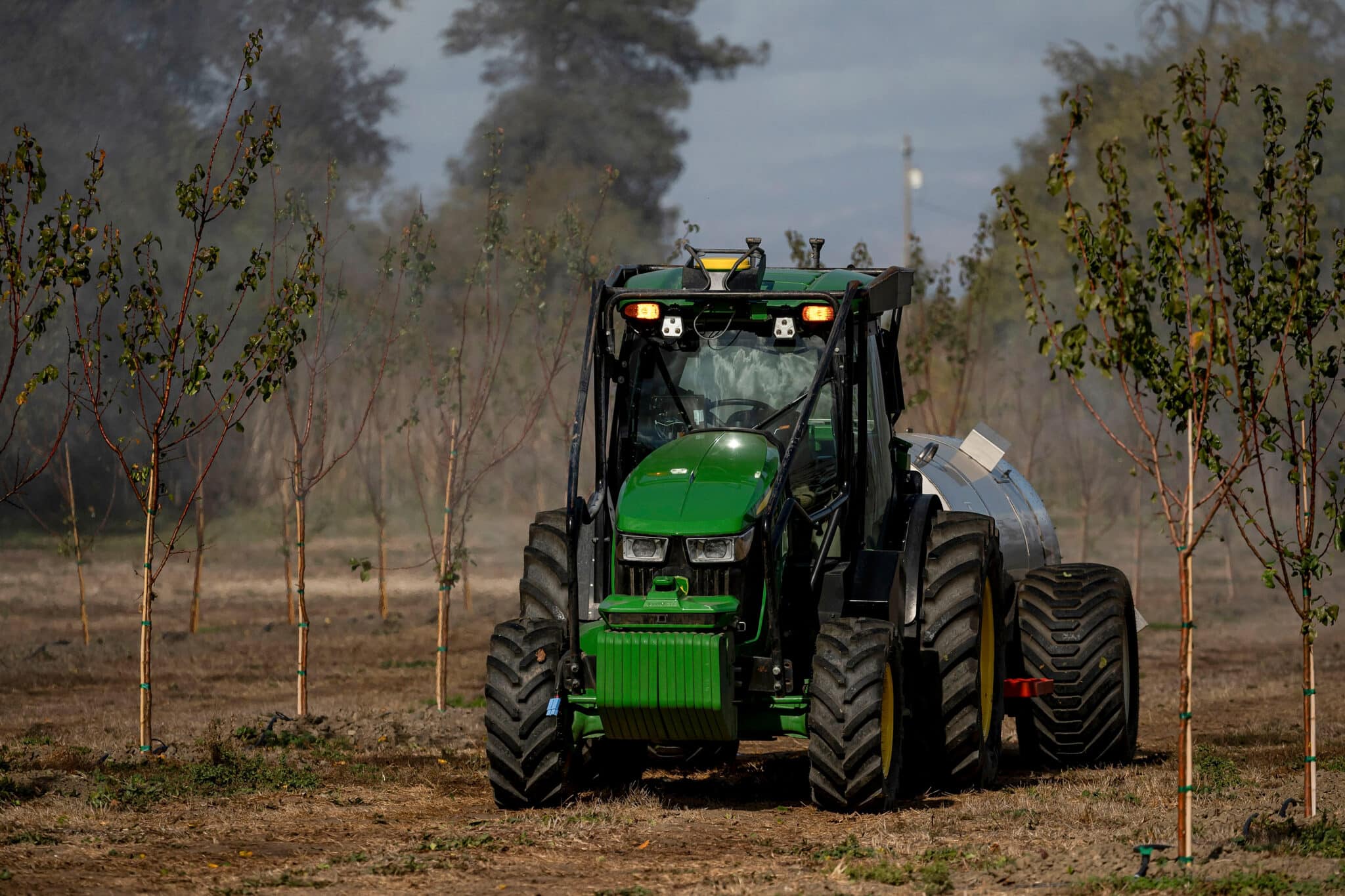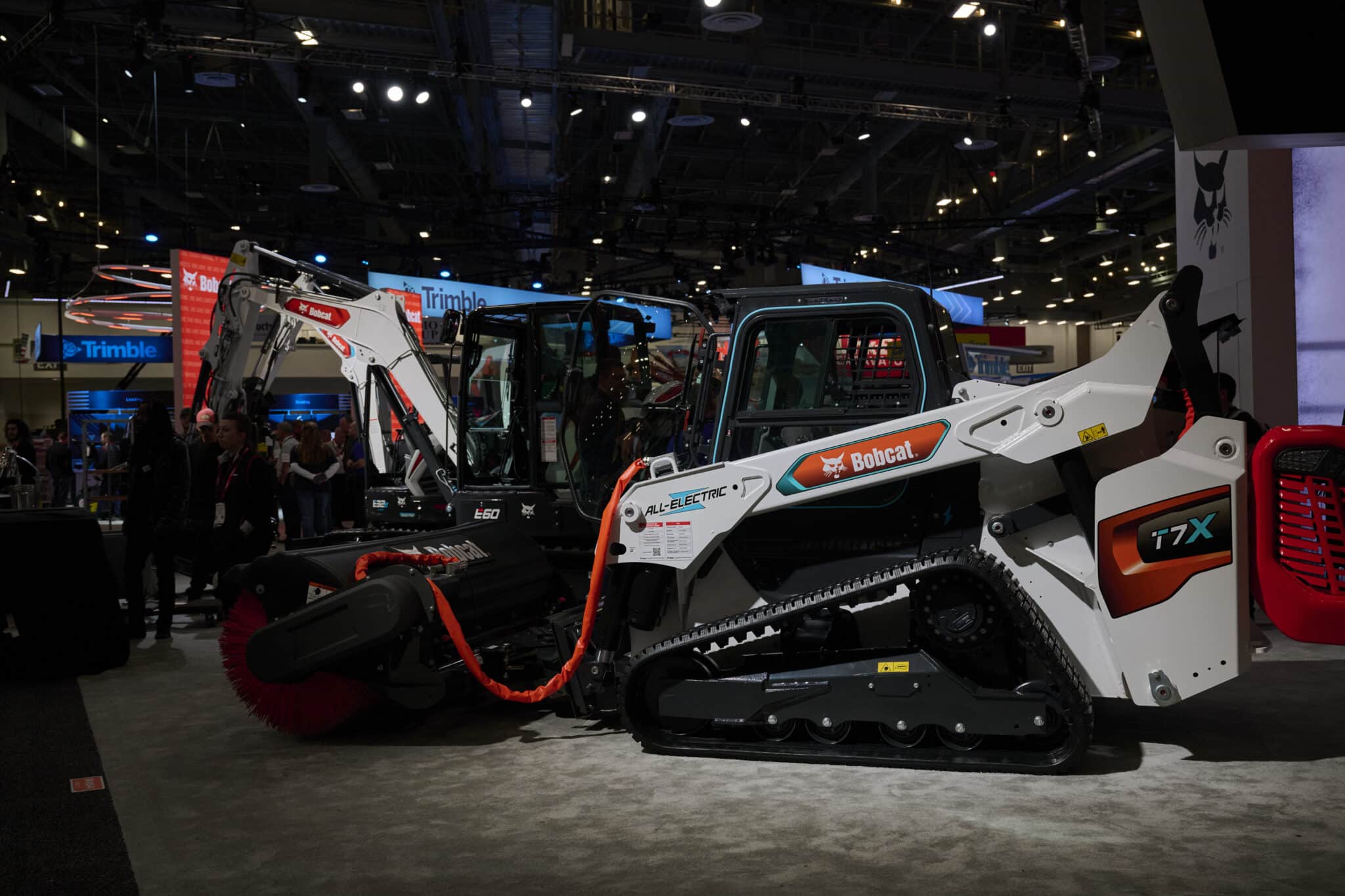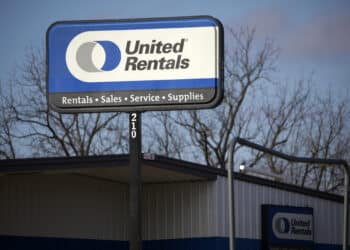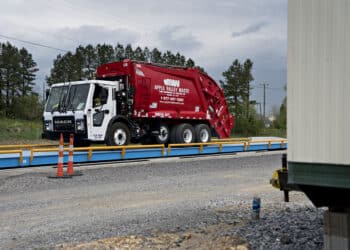From power generators to high-tech machinery, equipment dealers, rental houses and OEMs are capitalizing on new rental opportunities in an increasingly competitive market.
The overall equipment rental market is projected to grow 5.7% in 2025 to nearly $82.6 billion, topping last year’s record of $78.2 billion, according to the American Rental Association. Volume for the 100 largest equipment rental firms in North America reached a record $43.6 billion in 2024, according to the Rental Equipment Register 100.
The rental boom is attracting equipment lenders, who are helping dealers convert rentals into sales by offering customized financing.
Rentals pave financing path
Growth and diversification of the rental market are also creating financing opportunities. OEMs, for instance, can partner with dealers to convert rentals into purchases by offering new equipment incentives and programs even after several months of use, Terry Dolan, head of CNH Construction North America, told Equipment Finance News.
“We can work with the customer to lock down what that rate will be at the time of conversion,” he said. “This enables customers to take advantage of unique programs and special low-rate financing all while utilizing the new machine to grow their business.“
Rentals for new equipment technologies are another stepping stone to financing as buyers transition to a lease or financing packages when they’re ready to commit long-term, Scott Crozier, vice president of civil construction at technology provider Trimble, told EFN.
United, Herc specialty rentals soar
Specialty equipment — designed for a specific task or industry with unique needs beyond general machinery capabilities — is playing a larger part of the rental industry as the machinery serves businesses’ short-term needs while allowing them to experiment with new technologies.
For instance, industry giants United Rentals and Herc Rentals posted record revenue in the first quarter, reporting substantial growth in their specialty rental divisions. These divisions cater to niche markets including power supply, climate control, underground construction, manufacturing and renewable energy.
Revenue for United’s specialty division increased 22% year over year in Q1, and the rental house plans to open at least 50 more specialty locations in 2025, Chief Executive Matthew Flannery said during the company’s April 23 earnings call.
Herc’s specialty business, meanwhile, represented 24% of its total $6.9 billion fleet in Q1, Chief Operating Officer Aaron Birnbaum said during its April 22 earnings call.
Growth of these divisions indicates a rental submarket that’s “on fire” but also just scratching the surface, Josh Nickell, chief executive at Atlanta-based Northside Tool Rental, told Equipment Finance News.
“You think about things like pump power, trenching and shoring, flooring solutions, those have been really good growth markets, markets where rental penetration is low and there’s a lot of opportunity to convince people that you can rent versus buy. It’s just a transition in the mindset of the consumer, just like we’ve seen in the general construction industry.”
— Josh Nickell, CEO, Northside Tool Rental
Innovation boosts rental market
Equipment innovations continue as technology providers, including Trimble, Topcon and Hemisphere, integrate autonomous solutions, global navigation satellite systems, telematics systems, data collection software and other technologies into new machines.
The global construction equipment telematics market, for example, is expected to more than triple to $4.7 billion by 2034 from $1.5 billion in 2024, according to Global Market Insights. And the autonomous farm equipment market is projected to nearly double to $122.7 billion by 2032 from $63.7 billion in 2023, according to the market research company.
More contractors, truckers, farmers and warehouse operators are relying on technology to address:
- Labor shortages;
- High maintenance costs;
- Inefficient utilization; and
- Safety concerns.
However, tech-heavy equipment presents challenges like high upfront costs and, in some cases, an unclear return on investment. Dealers are starting to see that rental is an opportunity to introduce new technologies, allowing operators to test their effectiveness without a large investment, Luke Kurth, director of machine technology at Park City, Kan.-based Murphy Tractor, told EFN.
“We invested heavily a couple years ago in the rental side of things with technology,” he said. “If you don’t want to buy a brand new excavator with a system on it because you want to learn about it, you want to see if it’s the right thing for you, we offer a full top-to-bottom package of machines — equipment like basin rovers, total stations, lasers, whatever it is. You can rent any of that from us.”
Murphy Tractor’s rental revenue nearly doubled in 2024 largely because of its investment in tech, he said.

Subscription models, tech fuel efficiency
Subscription-based rental models provide another way to generate revenue for dealers and tech providers, Chris Shepard, vice president of channel development at Trimble, told EFN.
Trimble’s monthly subscriptions bundle the hardware and software, he said.
“That’s absolutely perfect for a rental customer,” he said. “If they’re not using it, they switch it up, they’re unsure, then they turn off the subscription. When they’re using it, they turn on the subscription. … It gets rid of that buying hurdle. Maybe I don’t have $50,000, but maybe I have $2,000 a month for when I need it.”
Dealers are also adding tech into their rental fleets because it helps operators to “get the job done right the first time,” increasing efficiency for customers and extending the longevity of the machine, Case’s Dolan said.
“They can also get a little bit less experienced operators in the machines and have those machines perform stronger for them,” he said. “And it is a nice addition to the rental fleet, because when a customer says, ‘Hey, I’m looking to rent a dozer or an excavator, etc.,’ and you have that [technology], it definitely is an intriguing opportunity for the customer.”
Rental houses target compact electric
While OEMs have upped their production of electric equipment in recent years, adoption has been slow due to high upfront costs, insufficient charging infrastructure and uncertain battery life. However, compact electric equipment is considered more practical than large machinery, making those concerns less important.
The global compact electric equipment market was valued at $62.1 billion in 2024, and is projected to grow 13.2% annually to $214.6 billion by 2034, according to research and consulting firm Fact.MR. The electric forklift market is also seeing high adoption rates, accounting for more than 70% of the global forklift market in 2024, according to Global Market Insights.
As adoption of smaller electric equipment units like mini excavators and skid steers increases, rental houses are taking notice, Northside Tool’s Nickell said.
“The larger equipment doesn’t have quite as much cachet to become electrified, but the smaller equipment, where battery power is becoming far superior, is transitioning that direction,” he said.
Moreover, electric equipment presents rental opportunities because “it’s not something that most contractors would want to own or could even justify owning,” Nickell said.
“If it was an Alphabet job site or a Meta job site, where they had sustainability goals, then the best thing for a contractor to do would be to go to a rental company that has [electric] then is sharing it between contractors who really will need fractional use of this new and specialty type of equipment.”

However, a reduced emphasis on sustainability under President Donald Trump’s administration could be a setback for electric equipment rentals and EV adoption overall, he said.
Apart from electric, Nickell said compact rental equipment is gaining popularity, including micro scissor lifts and mini skid steers.
Managing risk with credit checks, data tracking
As rental equipment finds favor, dealers and rental houses are putting more emphasis on credit checks to manage risk as they expand their fleets, Drew Dobson, general manager at Kersey, Pa.-based GM Equipment Rentals, told EFN. Thorough credit checks allow rental companies to verify “real information” on customers, he said.
“We as rental companies tend to be toward the bottom of the list of vendors that get paid,” he said. “The contractor is always going to pay his lumber supplier, the guy he calls every single day on every single job, before he calls or wants to pay the rental man. … Really having good information on your customers is probably my biggest piece of advice.”
Ensuring routine maintenance is also crucial for risk management in the rental space, Dolan said, noting that this is another avenue for telematics in dealer operations.
“Our dealers, through their control centers, can see if any of those machines out on rental have a failure,” he said. “The other thing it does is for longer-term rentals. Sometimes when you have a machine that’s out on rent, the customers can use it for 800,000, 900,000 hours. You want to make sure that the maintenance is being done. So, by the dealers having the telematics and connectivity to that unit, they can see when the preventive maintenance is due.”








